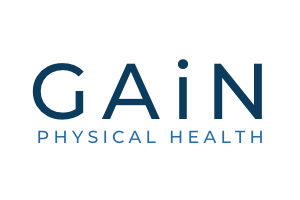Headaches can be painful and disabling, with their impact on a person’s quality of life often being underestimated.
Most people will look for relief from over-the-counter pain medication, however, this may only provide temporary relief, without addressing the underlying causes of the headache.
As Osteopathic Therapists we seek to diagnose the type of headache following a thorough assessment and examination, we then provide Osteopathic Manual Therapy and lifestyle advice to help manage your headache symptoms today and in the future.
There are many types of headaches but the most common Osteopathic Therapists help patients with are Tension-Type and Cervicogenic.
Tension-Type Headache

Location of Symptoms: both sides of the head, typically a band like pattern around the head. Can include the upper back, neck, back of head, around the ears, eyes and forehead.
What Does it Feel Like: dull, pressing or tightening, mild to moderate intensity
Other Factors:
- Can be associated with sensitivity to light and sound
- Not associated with nausea
- Not aggravated by physical activity
- Typically lasts 30 minutes to 7 days
- Can be triggered by stress
How Osteopathic Therapy can help:
Tension-Type Headaches can often be helped with a multifaceted approach ranging from manual therapy, lifestyle interventions related to sleep, diet, stress and different exercises.
Cervicogenic Headache
Location of Symptoms: typically the pain is located on one side of the head (back, side, forehead or orbital region).
What Does it Feel Like: moderate to severe pain that is non-throbbing and non-stabbing, which usually starts in the neck.
Other Factors:
- Typically caused by the neck, for example the facet joints, discs and nerve roots can cause referred pain to the head and there is clinical evidence of a neck disorder such as reduced range of neck motion or movement of the neck which provokes the headache.
- Can last 1 hour to many weeks
- Not usually associated with symptoms such as sensitivity to light, sound or noise.
 How Osteopathic Therapy can help:
How Osteopathic Therapy can help:
We reduce the symptoms of Cervicogenic Headaches with hands on techniques, relieving your tight muscles and joints. We also offer advice on exercise and lifestyle changes e.g. exercise to increase neck strength and endurance and changes to your posture when at work or driving which can help.
References:
Cerritelli, F., Lacorte, E., Ruffini, N. and Vanacore, N., 2017. Osteopathy for primary headache patients: a systematic review. Journal of pain research, 10, p.601. [Online]. Available at: https://www.ncbi.nlm.nih.gov/pmc/articles/PMC5359118/pdf/jpr-10-601.pdf
Liang, Z., Galea, O., Thomas, L., Jull, G. and Treleaven, J., 2019. Cervical musculoskeletal impairments in migraine and tension type headache: A systematic review and meta-analysis. Musculoskeletal Science and Practice, 42, pp.67-83. [Online]. Available at: https://www.sciencedirect.com/science/article/pii/S2468781219300827
Whalen, J., Yao, S. and Leder, A., 2018. A short review of the treatment of headaches using osteopathic manipulative treatment. Current pain and headache reports, 22(12), pp.1-7. [Online]. Available at: https://link.springer.com/article/10.1007/s11916-018-0736-y
Tony Miller, Osteopathic Therapist | Canmore, Alberta




